G d

















Raise a glass
Mocktails, cocktails make the season bright


Share the sweetness
Cookie recipes to swap or share
Compliments of







A library of taste
Two new cookbooks celebrate East Coast avours

Fall/Winter 2023 GRACIOUS LIVING ON THE EAST COAST
SERVE UP STYLE
Enhance the moments that matter with tasty apps.
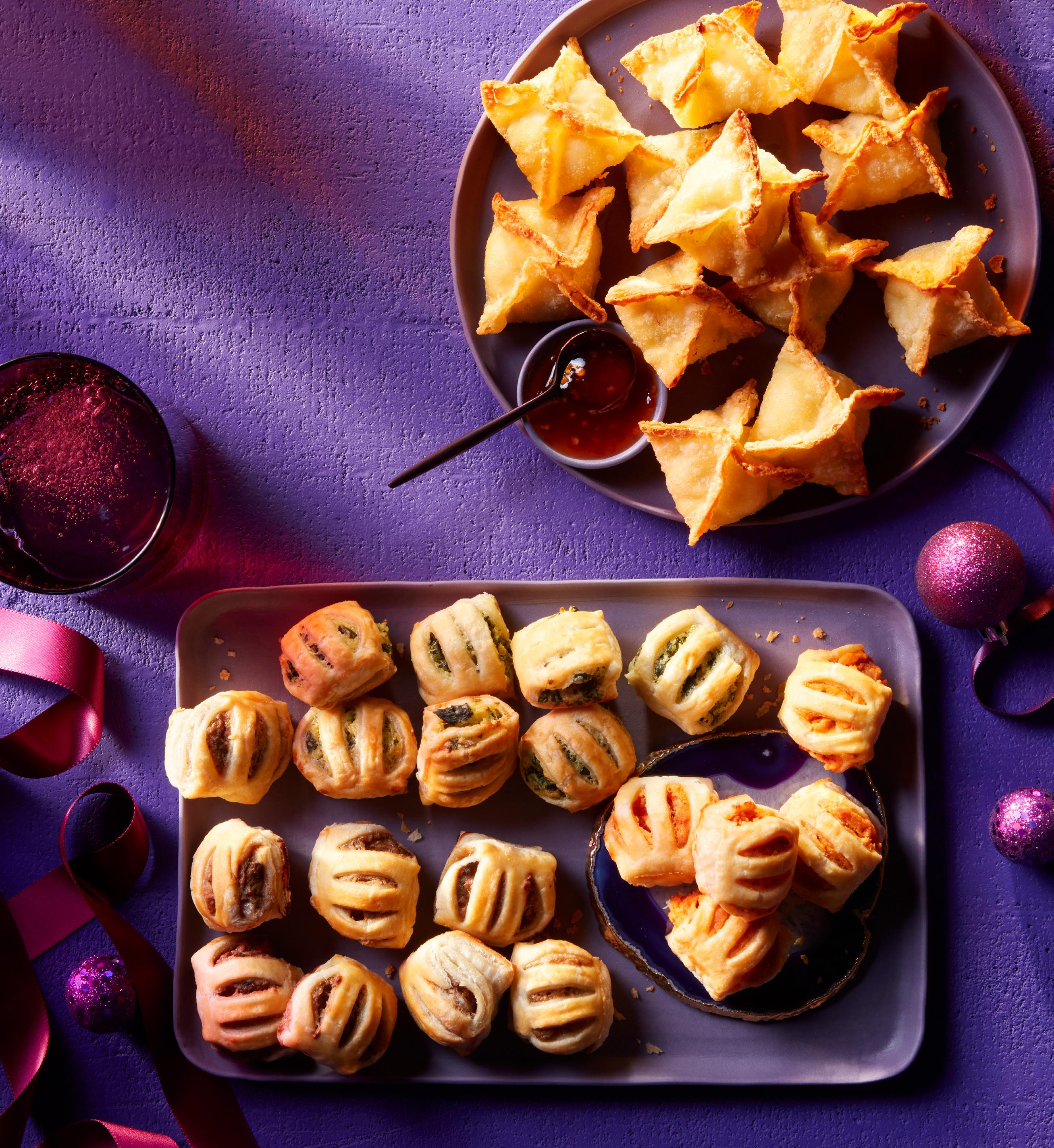
Sweet blue swimming crab and cream cheese in a hand-folded wonton.
PUFF PERFECT
Three mouthwatering vegetarian varieties. Flaky. Rich. Tasty!

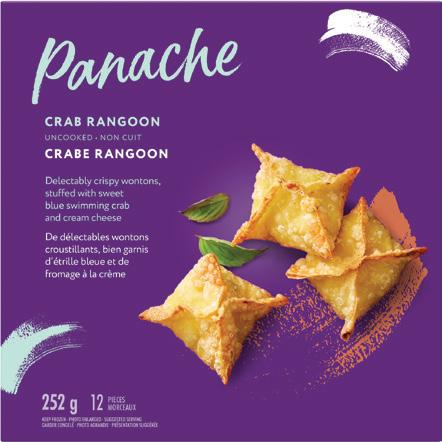
Available at
Panache Puff Pastry
Hors d’Oeuvre Collection (540 g)
Panache Crab Rangoon (252 g)
CRISP CATCH
ADD SOME

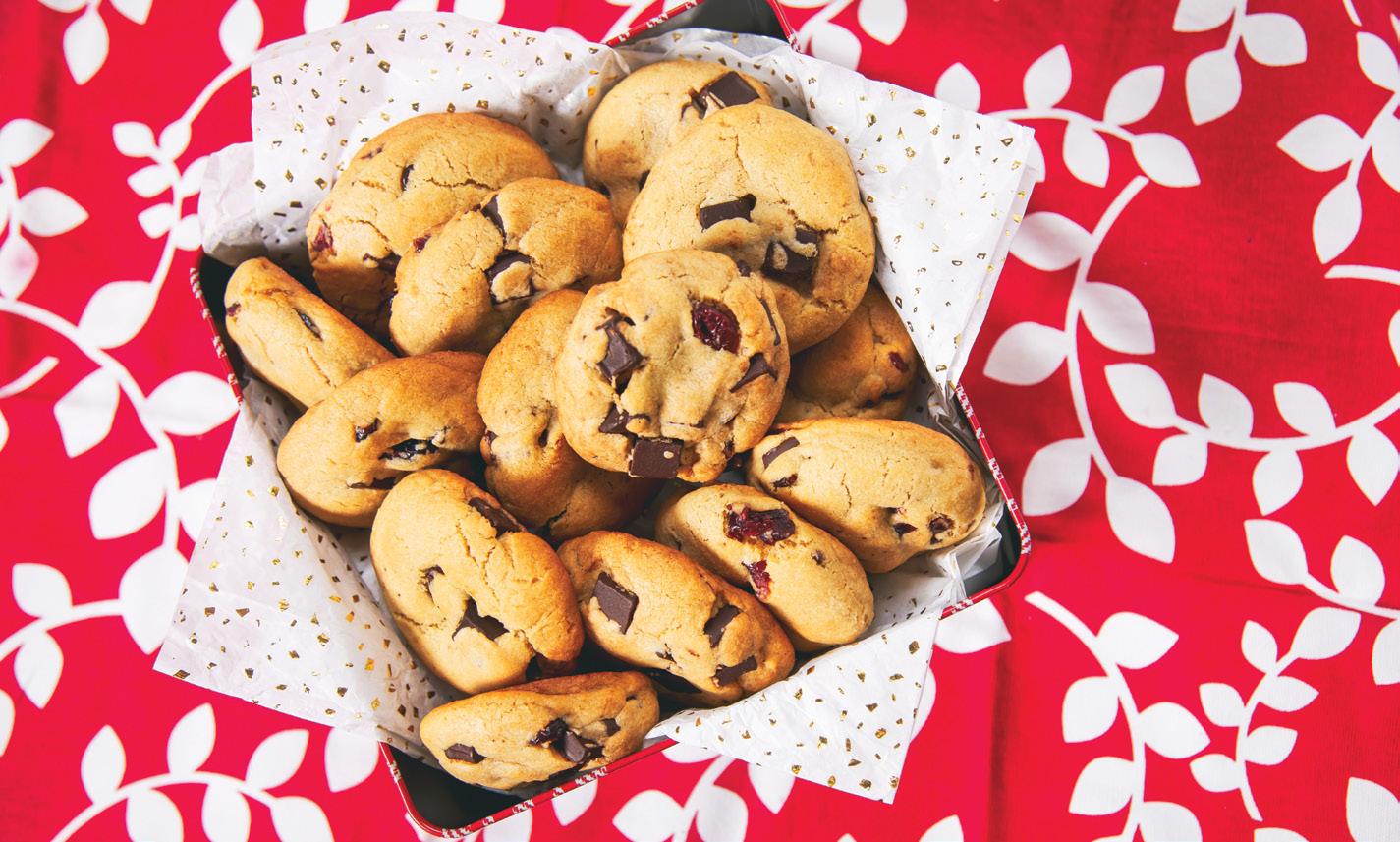
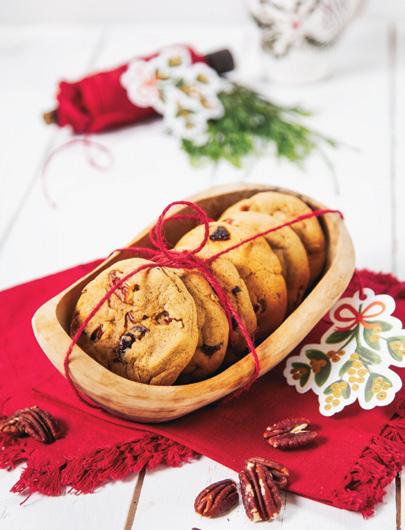










GT 3 GRACIOUS LIVING ON THE EAST COAST 6 Buzz-free bevvies All the taste and appeal, minus the booze by Colleen Thompson 8 Beloved cookie recipes An early love of making sweet treats often leads to a career by Colleen Thompson 18 Cooking through the seasons Two new Atlantic Canadian cookbooks will gladden foodies everywhere by Jodi DeLong Contents On our cover: We share delightful cookie recipes from local bakers.
Good Taste is a special insert in Saltscapes magazine, published by Metro Guide Publishing, 2882 Gottingen St., Halifax, N.S. B3K 3E2. Tel: 902-464-7258, Sales Toll-free: 1-877-311-5877 Contents copyright 2023/2024. No part of this publication may be reproduced without prior written consent of the publisher. Printed in Canada. STEVE SMITH/VISIONFIRE 22 Wild about gin Halifax’s Compass Distillery embraces the East Coast’s unique flavours by Colleen Thompson 24 Holiday gin cocktails Gin is the starting point for tasty holiday drinks by Colleen Thompson 29 New under the Atlantic sun Watch for these items in your local grocery by Jodi DeLong BRUCE MURRAY/VISIONFIRE Fall/Winter 2023 G d A library of taste Two new cookbooks celebrate East Coast avours The life of the party Great cocktails and more Share the sweetness Cookie recipes to swap or share KAY BOSCH 18 STEVE SMITH/VISIONFIRE 6 22 8
Photo by Steve Smith/ VisionFire
For easy family meals, s ck th us.
When life gets busy, it’s tempting to fall into a routine at mealtimes. Shake it up with kid-approved, parent-loved Canadian Seafood! With so many fun, simple, healthy and delicious ways to enjoy it, seafood for dinner is something you’ll want to stick with.
Look for the Choose Canadian Seafood logo in participating stores.
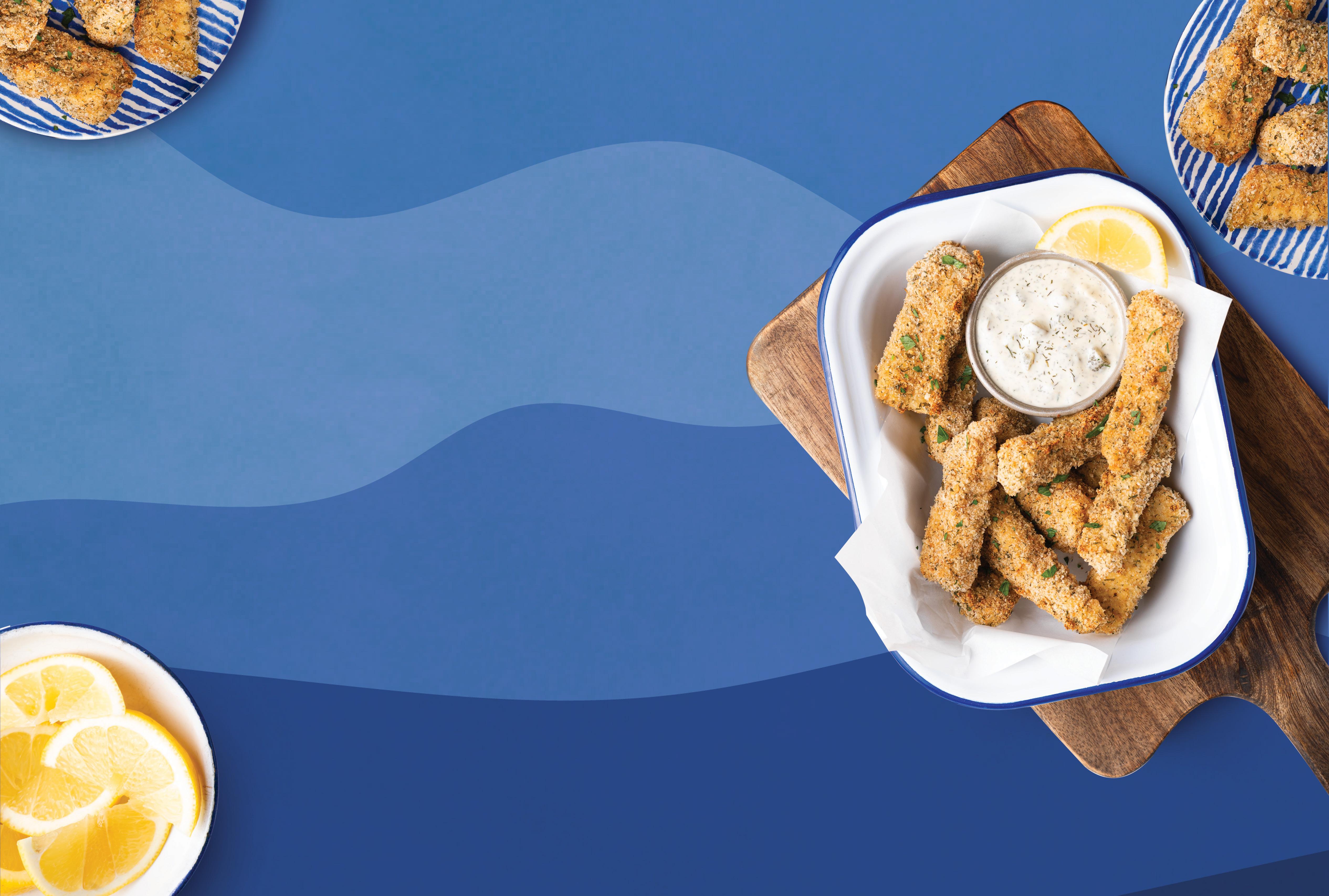

chooseseafood.ca Smarter Meals Out of the Blue. Visit our website for exclusive recipes, nutrition tips, and how to find Canadian Seafood.
Buzz-free bevvies
All the taste and appeal, minus the booze
By Colleen Thompson
Photography by Steve Smith/VisionFire
Demand for non-alcoholic beverages has never been more robust. Once relegated to a tiny corner of the beverage industry, the market for non-alcoholic options is booming as consumers re-examine their relationship with alcohol. From delicious artisanal sodas to sophisticated zeroproof cocktails, there’s something for anyone who wants to enjoy tasty drinks without the buzz.
“The most rewarding thing for us is allowing people to be social on their terms, and they don’t have to stick with water or pop,” says Mike Hogan, cofounder and brewmaster at Libra and Upstreet Craft Brewing in Charlottetown, P.E.I. “Libra is on a mission to help Canadians find their balance between being social and their health. Libra has a range of styles to choose from, so you can enjoy the party and avoid any ill effects.”
Libra non-alcoholic craft beer is made with the same techniques that brewers have used for centuries. The proprietary non-alcoholic brewing process doesn’t use additional high-tech equipment or any extraction. Brewers steep malted grains to extract sugar, boil the wort, add hops, and then cool the mixture before adding yeast.
Hogan explains, “We let it ferment and condition, which creates a tiny amount of alcohol while smoothing out the flavour. What happens with nonalcoholic beers is mostly on the fringe or out of bounds from conventional brewing. Some things they even tell you not to do.
We spent two years researching and developing to capture craft beer’s flavour and taste without the alcohol.”
Benjamin Bridge Winery in Gaspereau, N.S., produces Piquette Zero, Nova Scotia’s first alcoholfree wine. It’s a lively and delicious beverage, offering a highly creative, craft option to industrially dealcoholized wines, which are often said to lack character.
“The non-alcoholic market is seeing a cultural shift towards wellness and exponential growth due to this,” says Benjamin Bridge winemaker JeanBenoit Deslauriers. “Consumers seek to drink moderately, buy locally, and make social gatherings inclusive for all. Piquette Zero provides an exciting conduit for all those frustrations and not feel their zero-proof beverage is ‘less than.’”
Bulwark Ciders in New Ross, N.S., is also striving to make zero-proof beverages that are comparable to their alcohol counterparts. “We use a special fermentation technique for Bulwark’s Non-Alcoholic cider,” says Germain Bergeron, owner and founder of Bulwark. “The appearance is like a sparkling white wine with fine effervescent bubbles, a subtle apple aroma, and a hint of fermentation that confirms a very slight alcohol content of 0.5 per cent.”
Whether you’re a teetotaler, a designated driver, or simply in the mood for a buzz-free treat, elevate your zeroproof drinking experience.
The Bulwark Mockerlicious
Bulwark Non-Alcoholic Cider, cranberry juice, and a few frozen cranberries are all it takes to make this cranberry sparkler perfect for holiday gatherings.
1⁄3

Bulwark Sparkling Non-Alcoholic Cider
1⁄3 cranberry juice
1⁄3 sparkling water frozen cranberries
Combine cider and cranberry juice in a glass and top off with sparkling water. Garnish with a few frozen cranberries.

GT 6 FRESH AND LOCAL
The Libra Beer Caesar
A good Caesar needs two things: Loads of flavours and garnish. This cocktail requires some preparation but is worth the extra effort.

Rim spice mix (salt, black pepper, paprika, garlic powder)
1 lemon
1 can (355 mL) Libra Pale Ale, chilled
1 cup (250 mL) Clamato juice, chilled
A few drops Worcestershire sauce

A few drops hot sauce ground black pepper to taste lime wedges, celery, and pickled green beans
Pour a few tablespoons of the spice mix onto a plate. Rim the glass with a lemon wedge and dip the rim into the spice mix. Add ice cubes to each glass, following with Libra, then Clamato juice. Add four drops of Worcestershire sauce and hot sauce to taste. Finish with fresh lemon juice, salt, and pepper. If desired, garnish with lime slice, celery, and pickled green bean.
Piquette Zero Peach Bellini
We use fresh sliced peaches and juice to make this Piquette Bellini recipe. The more peach, the better!
1 peach, peeled, pitted, and sliced
1 cup (250 mL) peach juice
1 can (250 mL) Piquette Zero
½ cup (125 mL) fresh raspberries mint leaves
Place fresh peach slices and juice in a blender and purée until smooth. Add Piquette Zero to the blender and pulse once or twice to combine. Don’t over-mix, or you will lose the effervescence. Pour into a chilled glass. Garnish with a raspberry and mint leaf. Enjoy cold!

Blueberry Cove Kombucha Mojito
Kombucha is delicious on its own, but it’s also fun to switch it up and create a refreshing mocktail, like this alternative to a boozy mojito. The lime and mint pair perfectly with the sweet and tart blueberries.

¼ cup (65 mL) fresh blueberries
1 oz (30 mL) lime juice
½ oz (15 mL) simple syrup fresh mint
1 can (355 mL) Cove Blueberry
Pomegranate Kombucha lime slices fresh mint
Muddle fresh blueberries and lime juice in a glass. Mix in mint syrup or simple syrup. Add fresh mint and ice. Top off with Cove Blueberry
Pomegranate Kombucha. Garnish with lime and mint.
GT 7 GRACIOUS
ON THE EAST COAST FRESH AND LOCAL
LIVING
BIGSTOCK/ PHOTOSLB.COM
Beloved cookie recipes
Five ardent cookie makers share the fusion of family and flavours that leads to unforgettable treats
 By Colleen Thompson
By Colleen Thompson
Photography by Steve Smith/VisionFire
GT 8 CHEF PROFILE
Head down, lost in their imaginations, a wooden spoon and a beat-up bowl in hand, ready for the magic to be made — that’s where the journey starts for many bakers. The humble cookie is often the path to more elaborate pâtissiere, chibousts, macarons, and mignardises. But cookies remain the unfailing, unsung hero of pastry and a tried-and-true treat for chefs and home bakers. We asked a chef, two bakers, a chocolatier, and a pâtissier to share their most beloved cookie recipes.
Laura’s PB &J Oatmeal Cookie Sandwiches
Laura MacLeod, cookbook author, baker extraordinaire, and owner of Foraging for Carbs, Halifax, N.S.

“My love of peanut butter and jelly borders on obsessive,” she says. “My grandfather had the same affliction. It is rumoured he ate one daily for lunch during his long career at the shipyard. It is my comfort food. It is my ‘If you were stranded on a desert island and could only have one meal for the rest of your life’ food. So, it only seemed right to come up with a sandwich cookie that paid homage to this magnificent flavour combination.”

GT 9 GRACIOUS LIVING ON THE EAST COAST
CHEF PROFILE A P AEHELP
LOOK FOR US AT YOUR SOBEYS ATLANTIC LOCATIONS



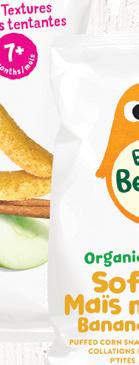

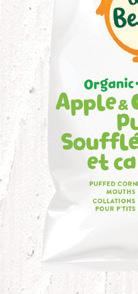


illy coffee


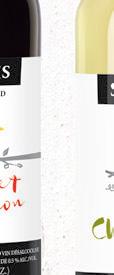












13615-13619



Enjoyed my Millions everyday
Hot Kids
13632-13633
Rice Crisp Organic - Healthy Choices

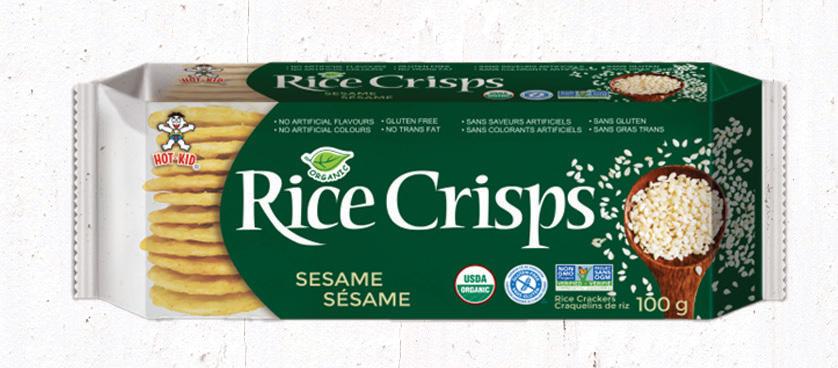
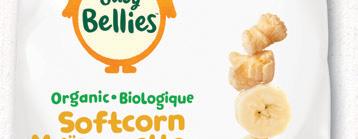

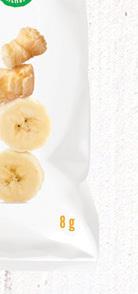

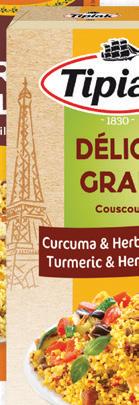

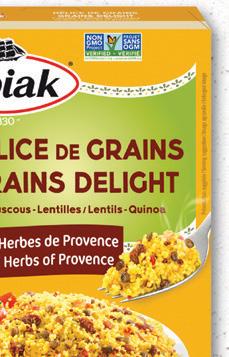

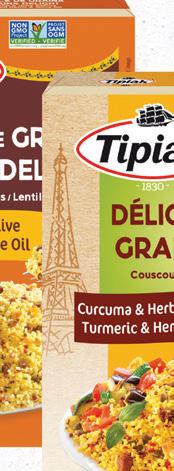


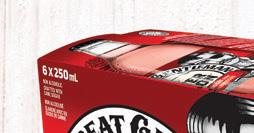

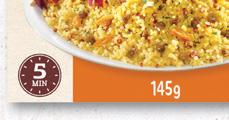


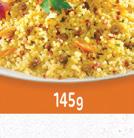


Maille gherkins


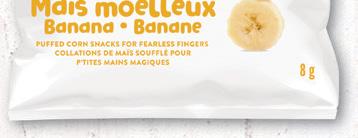
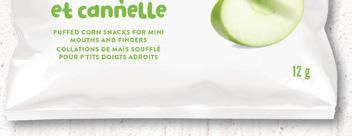
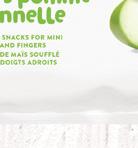


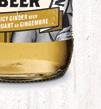
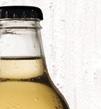








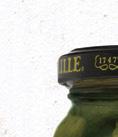
12245
The perfectly balanced garnish for Festive sesaon
Twinnings Peppermint Tea

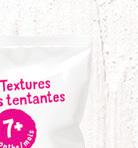


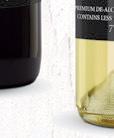

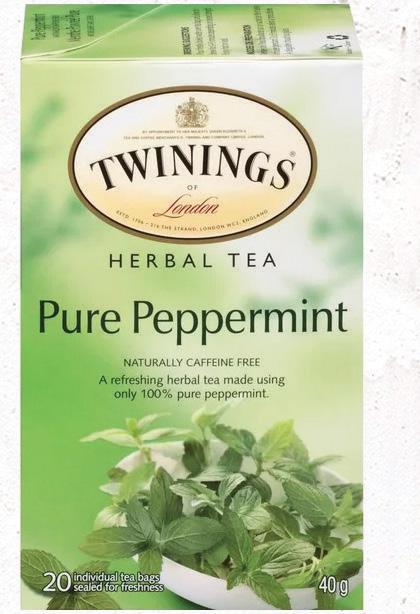

Tipiak
13626-13625-12618

Bringing originality and a hint of the exotic to your plate.
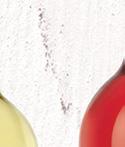



St.Regis


12860-12861-12862

Tabasco



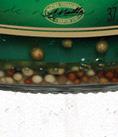


10581
Unique combination of peppermint leaves sourced from Germany, Poland, North America and other countries around the world. The fresh, minty taste of this savoury tea will lift your mind and spirit.


Great Gentleman
10723-13212


Premium sriracha sauce is rich, bold, and perfect for any meal. In one bite, you’ll have sweet and savory notes of red jalapeño peppers with a smooth garlic fi nish.

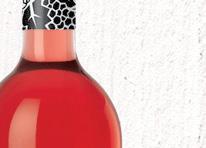

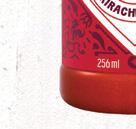


Born from the love for mixology and believing that life’s greatest discoveries are seldom left to chance, our name now more accurately expresses and celebrates people and tastes from around the world.

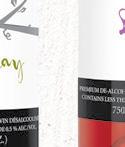


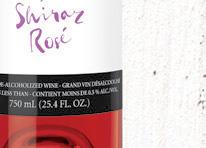










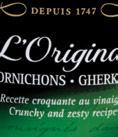


All the experience without the alcohol
Little Bellies
13457-13460
From stroller to schoolyard, our ranges are designed to support every step of natural child development, helping you as you nurture independent and unique little people.

Find us at your local
1 cup (250 mL) unsalted butter, soft
1 cup (250 mL) granulated sugar

1 cup (250 mL) light brown sugar
2 eggs (large)
2 tsp (10 mL) vanilla essence
2 tbsp (30 mL) honey
3¼ cups (810 mL) all-purpose flour
3 cups (750 mL) quick oats
1 tsp (5 mL) cinnamon
1½ tsp (7.5 mL) baking soda
½ tsp salt
Preheat oven to 350F (177C) and line a cookie tray with parchment paper. Sift flour, cinnamon, baking soda, and salt together, then set aside. Add butter and both sugars to the bowl of the stand mixer and mix on high for 5 minutes until light and fluffy.
Switch the mixer speed to low and add eggs one at a time. Add vanilla and honey. Scrape the bowl to make sure the butter is all mixed in. Add the flour mixture on low speed until just incorporated. Add the oats and mix until just combined.
Using the ice cream/portion scoop, tray up 22 cookies (cookies should be 2 inches (5 cm) apart, do in batches). Flatten the cookies with the palm of your hand and bake for 10 minutes. Let cool on the tray for 5 minutes, then transfer to the cooling rack to cool completely.

Peanut Butter Buttercream
½ cup (125 mL)
unsalted butter, soft
½ cup (125 mL) smooth peanut butter
2½ cups (375 mL) icing sugar
1 tsp (5 mL) vanilla
Pinch fine kosher salt
strawberry jam
Cream butter and peanut butter until light and fluffy. Add vanilla and salt. Add icing sugar and mix until smooth, with no lumps (add more icing sugar if needed).
Fill pastry bag with the icing. Using your piping bag, and working in a circular motion, do a spiral of buttercream on half of the cookies. Spoon a layer of jam on top of the buttercream. Top with second cookie on and have the most amazing PB&J ever!
HELPING YOU MAKE BETTER CHOICES FOR YOUR SPEECH AND HEARING HEALTH.
At the Nova Scotia College of Audiologists and Speech-Language Pathologists, client safety and trust are at the heart of everything we do.
If you or someone you love is being treated by an Audiologist or Speech-Language Pathologist, you can verify the credentials of your chosen practitioner with the College.


Because we regulate the professions of Audiologists and Speech-Language Pathologists, you can feel confident that the skills and education of a verified practitioner meet all the appropriate levels of accreditation.
CHOOSE YOUR HEALTH CARE PRACTITIONER WITH CONFIDENCE.
GT 11 GRACIOUS LIVING ON THE EAST COAST
Visit our website at https://nscaslp.ca/ to verify the qualifications of any Nova Scotia-based Audiologist or Speech-Language Pathologist.
Have a complaint? The College can work with you to resolve issues.
Shani’s Snickerdoodles
Yield: makes 24 cookies
Shani Beadle, interior designer, baker, and owner of Main & Mersey, Liverpool, N.S.

“I was introduced to these cookies as a kid, and when the little cookie shop closed in our mall, I never forgot about them. When my daughter was born, I wanted to find a recipe, which I did, but then I had to tweak it a bit to make it right,” says Shani.

2¾ cups (650 mL) all-purpose flour
½ cup (125 mL) unsalted butter, softened
½ cup (125 mL) shortening
¼ tsp (1 mL) salt
1¾ cups (425mL) sugar
2 large eggs
2 tsp (10 mL) cream of tartar
1 tsp (5 mL) baking soda
2 tsp (5 mL) ground cinnamon
Preheat the oven to 400F (205C). Line baking sheets with parchment paper and set aside. Sift the flour, cream of tartar, baking soda, and salt into a small bowl.
In a large bowl, combine the butter, shortening, and 1½ cups (375 mL) sugar. Beat thoroughly with an electric mixer on medium speed until light and fluffy, about two minutes. Add eggs and beat until creamy and well combined. Add the dry ingredients and beat until combined. In a small bowl, stir the remaining ¼ cup (65 mL) of sugar with the cinnamon.
Shape the dough into 1½-inch balls (1 tablespoon/15 mL per ball) and roll in the cinnamon sugar. Arrange the balls approximately 2 inches (5 cm) apart on baking sheets. Bake two sheets at a time until the edges of the cookies are set but the centres are still soft (they will not brown), eight to 10 minutes, rotating the sheets halfway through. Transfer the sheets to wire racks to cool for five minutes. Repeat with the remaining dough balls. Store in an airtight container for up to a week.
GT 12 CHEF PROFILE
S U B M I T T E D


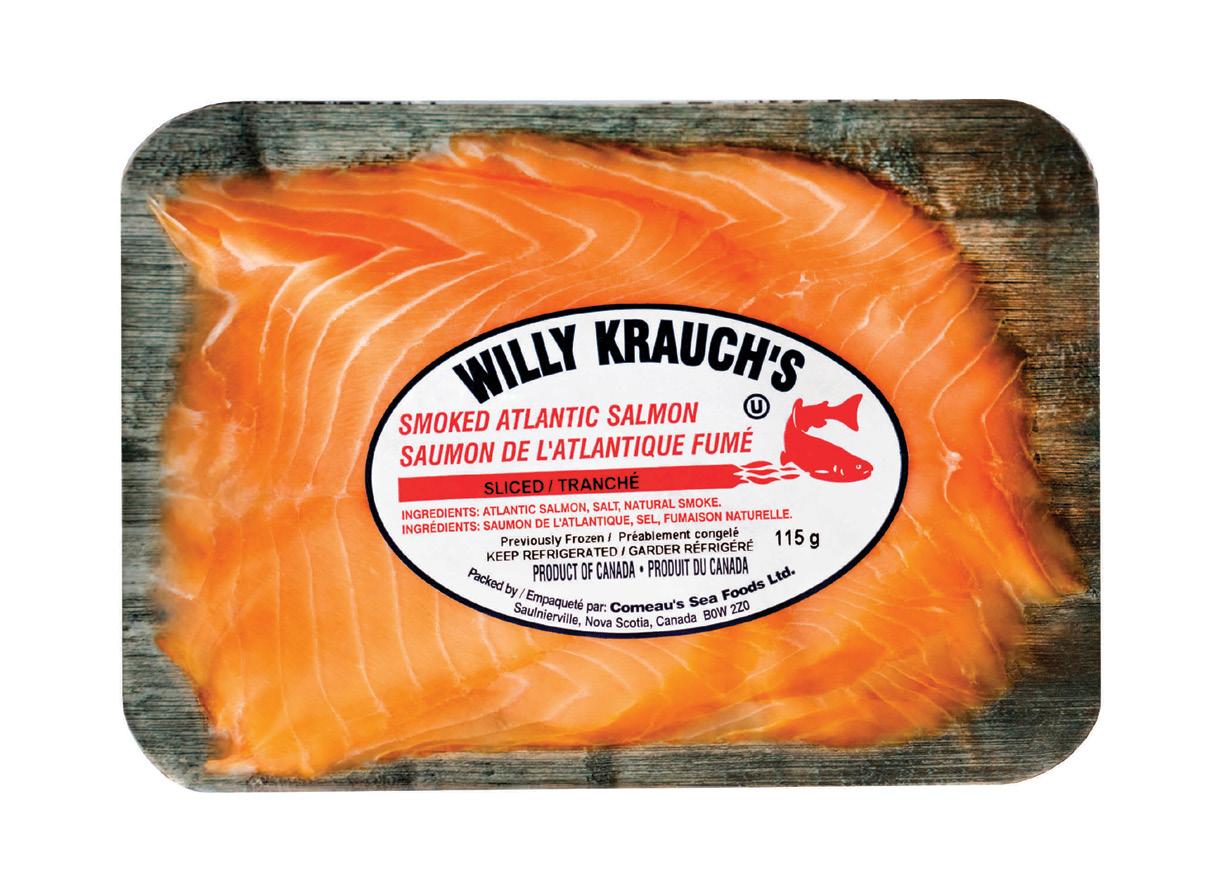























Seadon’s Cherry Chocolate Chip Cookies

Seadon Shouse, executive chef and cookbook author of the recently released “From the Hill by the Sea.”

Chef Seadon’s upbringing in Eagle Head, N.S. inspires his recipes. While he spends most of his time in Hoboken, N.J., at Halifax Restaurant, these cookies remind him of home and family. “I have been making this chocolate chip cookie recipe for years, and since my wife loves cherries, I once added cherries for her,” he says. “Now this is a staple in my household. I usually make a large batch and freeze the dough to easily make it whenever a craving occurs.”
4 cups (1000 mL) all-purpose flour
1½ tsp (7.5 mL) salt
1½ tsp (7.5 mL) baking soda
1½ cups (375 mL) softened butter, room temperature
1 cup (250 mL) granulated sugar
¾ cup (177 ml) light brown sugar
2 eggs, large
2 tsp (10 mL) vanilla extract or paste
2 cups (500 mL) bittersweet chocolate chips or chopped chunks
1½ cups (375 mL) dried cherries, chopped
Preheat oven to 375F (190C). Sift flour, salt, and baking soda in a clean, dry bowl. Using a stand mixer, add the butter and sugars to the bowl and whip with the paddle attachment for two-three minutes until it looks creamy and smooth. While running on medium-low, add the vanilla and one egg at a time. Whip until completely incorporated. Add the sifted dry ingredients, the chocolate, and the cherries and mix until just combined. Roll or scoop to the desired size and bake at 375F for 12-14 minutes. Cool on a wire baking rack and enjoy!
GT 14 CHEF
M RA I A VOL
PROFILE
Kimberly’s Pumpkin, Spice & Pecan Cookies
“Raising small children, I always looked for ways to incorporate vegetable fibre and nutrients into their diet. And now that my children are older, they still love the warm flavours of pumpkin, spice, and nuts combined with cranberry tang. I fondly remember my daughter, who was too little to stand beside me then. She would sit on the counter next to the bowl and mix while I added the ingredients. They are often requested in the bakery because of the chewy texture and warm spices. The versatile recipe can be made vegan by switching the butter for vegetable oil,” says Kimberly.
¼ cup (75 mL) toasted pecans
½ cup (125 mL) unsalted butter, melted and slightly cooled
¼ cup (75 mL) packed brown sugar
½ cup (125 mL) granulated sugar
1 tsp (5 mL) pure vanilla extract
6 tbsp (125 mL) pumpkin puree
1½ cups (375 mL) all-purpose flour
¼ tsp (1 mL) salt
¼ tsp (1 mL) baking powder
¼ tsp (1 mL) baking soda
1½ tsp (7.5 mL) ground cinnamon

1 tsp (5 mL) pumpkin spice
¼ cup (75 mL) dried cranberries
Place pecans on a pan and bake at 350F (177C) until slightly browned and fragrant. Coarsely chop. Blot the pumpkin on a paper towel to remove extra moisture for a chewier cookie before adding to the recipe. Whisk butter and sugars, add vanilla and pumpkin, and continue whisking until smooth.
Sift the flour, baking soda, salt, and spices together, then add to wet ingredients, mix until well incorporated, and add the toasted chopped pecans
and dried cranberries. Refrigerate for half an hour.
Preheat oven to 350F (177 C). Scoop cookies approximately two tablespoons (30 mL) in size, roll them into balls

and slightly flatten them on a prepared sheet, and top with a few more pecans.
Bake for 10-12 min until lightly brown on the edges. These cookies taste best when thoroughly cooled, so be patient.
GT 15 GRACIOUS LIVING ON THE EAST COAST CHEF PROFILE
Kimberly Davis, cookie artist and owner of At Your Service Creations, Charlottetown, P.E.I.



















































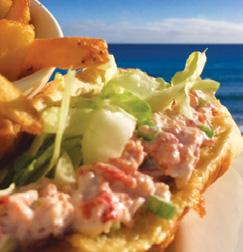


























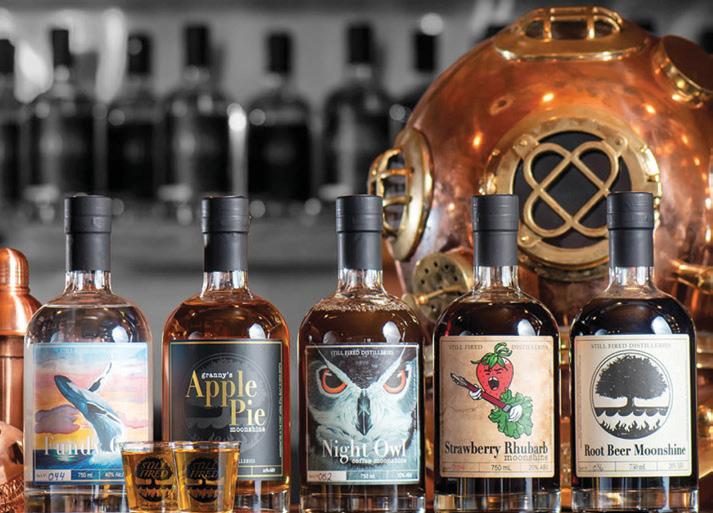












1078 Old Sackville Rd., Middle Sackville NS 902.832.1313 www.oakridgecemetary.ca For information on all your pre-arrangement questions. Coffee overlooking the Atlantic. Haddock ‘n’ chips. Festive buffets. Mussels paired with a crisp Tidal Bay. And, a perfectly roasted marshmallow by the bonfire. Simple, fresh, and authentically maritime. Because everything tastes better at the beach. A taste of authentic. 1.800.565.5068 whitepoint.com CONTACT info@bioteem40.ca 902.300.4553 www.bioteem40.ca Making Living Healthier, Easier • Probiotics & Prebiotics • 30 strains, 20 billion CFU • Omega lipids: EPA & DHA • Antioxidants & Anti-inflammatories • Essential vitamins A, B, C, D, E • Bioflavonoids & Polyphenols • Multi-mineral complex • Essential Amino Acids • +8 bioactives for skin health Nutritional probiotic shots containing: Check out constantinedesigns.com for the perfect gift and be sure to drop by our booth at Saltscapes Fall Expo. Meaningful jewellery, beautifully designed and handcrafted in Atlantic Canada. Upper Economy, NS www.thatdutchmansfarm.com Create your festive charcuterie boards around the award winning cheeses of Nova Scotia’s original artisan cheesemakers, That Dutchman’s Cheese Farm. 23
Rousseau’s Oatmeal Raisin Cookies

Nathalie Morin and Julien Rousseau, co-owners Rousseau Chocolatier, Halifax, N.S.

Chocolate aficionados also need delicious cookies and not necessarily chocolate ones. “This was my grandmother’s recipe and would be served on a beautiful China platter every time we visited,” says Nathalie. “It reminds me of family gatherings, playing with cousins, and fond childhood memories. We live far away from everyone now, but Julien and I continue the tradition by making these with our children and sharing our memories with them.
½ cup (125 mL) butter
½ cup (125 mL) shortening
1 cup (250 mL) brown sugar
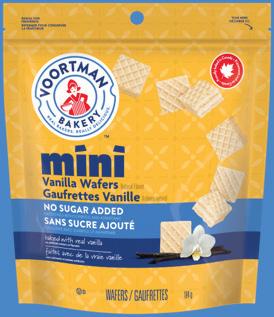
½ cup (125 mL) white sugar
2 eggs, large
2 cups (500 mL) rolled oats
¾ cup (177 mL) unsweetened coconut
1 tsp (5 mL) baking powder

½ teaspoon baking soda



½ tsp (2.5 mL) salt
1 tsp (5 mL) vanilla
½ cup (125 mL) raisins or substitute with premium chocolate chips
½ cup (125 mL) wheat germ
1½ cups (375 mL) flour
Preheat oven to 350F (177C) and line a baking sheet with parchment paper. In a large mixing bowl, combine the butter, shortening, brown sugar, and white sugar. Use an electric mixer to cream the ingredients together until light and fluffy. Add the eggs to the mixture one at a time, beating well after each addition.
Mix the rolled oats, coconut, baking powder, baking soda, salt (if desired), and vanilla in a separate bowl. Gradually add the dry ingredients to the creamed mixture, mixing well after each addition. Stir in the raisins or chocolate chips and wheat germ until evenly distributed.
Slowly mix the flour, about 1⁄2 cup (125 mL) at a time, until the dough becomes cohesive. Drop rounded tablespoonfuls of dough onto the prepared baking sheet, spacing them about two inches (five cm) apart. Bake in the oven for 10-12 minutes until the edges are golden brown. Allow the cookies to cool on the baking sheet for a few minutes, then transfer them to a wire rack to cool completely.
The Delicious Way to Care About Sugar
Delightfully light & delicious, with real ingredients like vanilla, strawberries & cocoa.
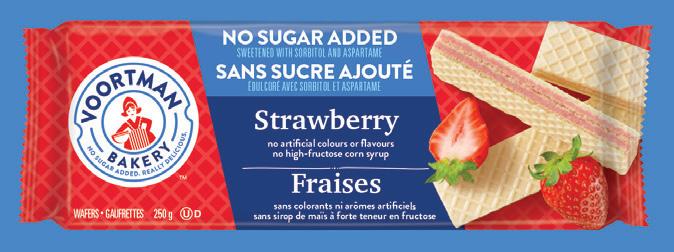


GT 17 GRACIOUS LIVING ON THE EAST COAST
M I ELLEHC
CHEF PROFILE
Cooking through the seasons
Two great new Atlantic Canadian cookbooks will gladden foodies everywhere
 By Jodi DeLong
By Jodi DeLong
The East Coast Celebrations Cookbook
 by Craig Flinn (Formac)
by Craig Flinn (Formac)
The Grounds Café: Seasonal Dishes from Murray’s Century Farm recipes by Nick
 Van Mele (Boulder)
Van Mele (Boulder)
Most cooks will attest there’s no such thing as too many cookbooks and now there are two more East Coast editions to add to your must-have collection.
Nova Scotian chef and media personality Craig Flinn is well known for his passion for local ingredients. He’s gathered up a collection of favourite recipes in The East Coast Celebrations Cookbook, which, as the title suggests, is divided up by celebratory events.
Flinn kicks off the cornucopia of recipes with New Year’s, and finishes up with the Christmas feast, with each
section offering a few appetizers, main courses, and desserts. Along the way, rediscover familiar favourites such as Boeuf Bourguignon and Good Friday Fishcakes with green tomato chow-chow, but with Flinn’s own spin on them. As a bonus, an appendix offers recipes for some homemade condiments including Sauerkraut Coleslaw, Pineapple Vanilla Jam, and Cider Vinegar Syrup.
This is a cookbook for any skill level. There’s nothing overly complicated among the recipes and not a lot of exotic ingredients to find. Many of the components are grown or produced locally. “My dishes are traditional, comforting, and tend to celebrate the small moments we experience in life,” Flinn says in his introduction.
The Murray family of Portugal Cove (near St. John’s, N.L.) has worked
the land of their homestead for more than 200 years. They’ve evolved into operating a number of complementary businesses, including Murray’s Garden Centre, Murray Meadows Farm, and the Grounds Café, which they describe as a farm-to-table restaurant near the other businesses. The café’s head chef, Nick van Mele, loves to cook using locally grown or foraged foodstuffs, and he has created a firm fanbase among local foodies. He’s gathered up some of his recipes in The Grounds Café: Seasonal Dishes from Murray’s Century Farm, a colourful hardcover book with some innovative dishes that are as beautiful as they are tasty.
You won’t find fish and brewis, or toutons, or Jiggs’ dinner among the dishes offered here. This is new Newfoundland cuisine, celebrating the best that can be grown, caught, or wild-crafted (harvested from the wild) on that rocky island. Dishes like oyster mushroom and chive tartlet with garlic cream, beef fritter bowl, and shakshuka take pride of place.
The sections are divided seasonally from spring to winter, focusing on what is readily available (or easily substituted) in each season. The shakshuka recipe, for example, calls for large, fresh tomatoes, but notes you can use canned tomatoes. I can’t wait for next year, to collect fireweed (a wildflower that grows everywhere in this region) and make fireweed jelly.
GT 18 BOOK REVIEW
Mum’s Apple Crisp (Craig
 Flinn)
Flinn)

Serves 8 to 10
6 large apples
2 tbsp (30 mL) white sugar



1 cup plus 2 tbsp (280 mL) brown sugar
1 tsp (5 mL) cinnamon
¼ tsp (1 mL) nutmeg

¼ tsp (1 mL) allspice






1 tbsp (15 mL) cornstarch



1 cup (250 mL) flour

1 cup (250 mL) rolled oats
¾ cup (175 mL) cold butter
1 pinch salt
Preheat the oven to 375F (190C). Peel and core the apples and slice into sixteenths. Toss in a bowl with the white sugar, 2 tablespoons (30 mL) of brown sugar, cinnamon, nutmeg, allspice, and cornstarch until the apples are evenly coated.
Prepare a 9 x 13-inch (23 x 33 cm) baking dish by greasing it with either butter or non-stick food spray. Place all the apples in the dish. In a second large bowl combine the remaining brown sugar, flour, and oats. Mix well. Cut the butter into small cubes and then work it into the dry mixture using a fork or pastry cutter, until the texture resembles breadcrumbs. Spread the topping mixture over the apples evenly, patting down slightly.
Transfer the baking dish onto a baking tray, to catch any sticky spillage as the crisp cooks, and bake for 35 to 45 minutes, or until the topping is brown and crisp and the apples are tender. Rest for at least 30 minutes before serving.
Top with vanilla ice cream or whipped cream.

is
surpassed by your
for creating
ONE-TWO-
Offers valid on purchases made between July 1, 2023 and December 31, 2023 For a list of terms and conditions, please visit an authorized retailer E&OE © 2023 BSH Home Appliances Ltd All rights reserved. Daley’s Brand Source Home Furnishings 1840 Lincoln Rd. Fredericton, NB (506) 458-9565 randall@daleysbrandsource.ca Dave’s Appliance 1 Sandy Point Rd. Saint John, NB (506) 634-1888 sales@davesappliance.ca Creative Appliance Gallery 51 Raddall Ave., Unit 14 Dartmouth, NS (902) 481-3313 info@creativeappliance.ca Feron Kitchen Inc. 110 Chain Lake Dr., Unit 31 Halifax, NS (902) 450-5144 • 1-800-565-4044 dferon@feronkitchens.com MacArthur Appliances Inc. 96 Mount Edward Rd. Charlottetown, PEI (902) 368-2200 macarthur@macarthurapp.pe.ca Visit a Thermador dealer for more infor mation Indulge in Unparalleled Luxury ONE-T W O F R E E $1 5 , 09 6 * VALUE UP TO *Conditions apply Full offer details at thermador.ca/en/experience/special-offers ® YEAR WARRANTY *Terms & conditions apply 5 BSHTHR23013 Saltscapes Ad v3.indd 1 2023-05-31 4:02 PM GT 19 GRACIOUS LIVING ON THE EAST COAST
Your love of stunning design
only
passion
deliciously daring dishes. With our
FREE® offers, you can embrace both and surround yourself with the unrivalled craftsmanship and performance of Thermador appliances.
KAY BOSCH
Chive and Cheese Curd Scones (Nick Van Mele)

2⁄3 cup (158 mL) cold unsalted butter
1 egg
½ cup (125 mL) buttermilk


1¾ cups (400 mL + 1 tbsp) all-purpose flour
1 tbsp (15 mL) salt
½ tbsp (7.5 mL) sugar
2¼ tsp (11 mL) baking powder
½ tsp (2.5 mL) baking soda
1½ cups (375 mL) cheese curds
2 bunches fresh chives, chopped flaked seasalt and pepper
1 egg plus 1 tbsp water or milk for egg wash
Mix flour, salt, sugar, baking powder and baking soda in a medium bowl and set aside. Use a cheese grater to grate cold butter, and rub it into the dry mix. Mix buttermilk and egg in a separate bowl, then add to flour mixture. Add cheese curds and chives. Roughly mix to make a loose dough. Don’t overmix or knead. You want to keep small chunks of butter to create air pockets while the scones bake.
Preheat oven to 375F (190C) and roll out dough on a well-floured surface to about ½ inch (1.2 cm) thick. Cut into wedges or squares. Place on a heavy baking sheet lined with parchment paper. Whisk together egg and water or milk, and brush the scones with this wash. Sprinkle a little flaked sea salt and cracked pepper on each scone. Bake for 12-18 minutes or until golden.
Made Right Here
BOOK REVIEW NICK VAN MELE GT 20
★
★
Butter Chicken and Egg Flatbread

1 lb (454 g) boneless, skinless chicken thighs, cut into bite-sized pieces
/3 cup (75 mL) plain yogurt












1 tbsp (15 mL) curry powder

1 tbsp (15 mL) garam masala

1 tsp (5 mL) salt
½ tsp (2 mL) garlic powder

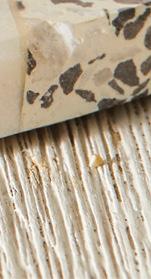


½ tsp (2 mL) ground coriander

¼ tsp (1 mL) ground cumin






2 tbsp (30 mL) oil






1 small onion, diced

1 can (398 mL) crushed tomatoes
4 pieces (400 g) garlic naan bread
1 cup (250 mL) crumbled feta cheese






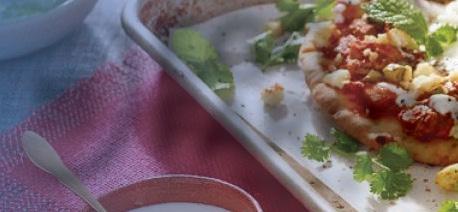
½ cup (125 mL) diced dill pickle
4 eggs yogurt, fresh cilantro sprigs, fresh mint leaves and black pepper for garnish
1. In a medium bowl, combine chicken, yogurt, curry powder, garam masala, salt, garlic powder, coriander and cumin. Let marinate for 30 minutes.
2. Preheat oven to 400°F (200°C).

3. In a large non-stick skillet, heat oil over medium-high heat; sauté onion for 1 minute. Add chicken mixture and cook 4 minutes, stirring occasionally. Stir in crushed tomatoes; cook for 2 minutes.



4. Place naan bread on a large parchment paper-lined baking sheet. Divide butter chicken evenly among naan slices; sprinkle with feta cheese and pickles. Make a well in the centre of each naan and crack one egg into each well.
5. Bake for 10-15 minutes or until egg whites are cooked and yolks are still runny. Drizzle with yogurt and garnish with cilantro, mint and pepper to serve.


A delightful blend of textures and flavours! The sour dill pickles compliment and balance the richness of the comforting butter chicken.
more delicious
visit nsegg.ca Prep Time: 30 minutes, Cook Time: 17 minutes Celebrating 60 Years of Growing! denhaan.ca G e Fresh and Local All Year Round SHOP & FIND MORE RECIPES AT gallopingcows.com GREETINGS SEASON’S FROM Turkeyand Havarti Sandwich withArugula and Galloping Cows Cranberry Pepper Jelly TRY OUR Spreads that celebrate local fruit, field grown vegetables & fresh spring water. AVAILABLE IN SOBEYS, LOBLAWS & PETE’S FROOTIQUE 7644 2021_09_02 sj GC_GoodTaste_Ad copy.pdf 1 2021-09-02 12:22 PM
For
egg recipes
Wild about gin
Halifax’s Compass Distillery embraces the East Coast’s unique flavours
By Colleen Thompson
As it applies to wine and food, the notion of terroir is an expression of place. And it’s the same when it comes to gin. Pulling off a grain-toglass spirit using only Nova Scotian ingredients is harder. But that’s precisely what gets musician-turned-head distiller Alex Wrathell at Compass Distillers on Agricola Street in Halifax excited.

It’s a Friday afternoon at Compass Distillery and things are busy. A tour
of the distillery is about to begin. A few people have already gathered at the bar (well, it is Friday). Bags of juniper berries arrive, workers unload a massive sack of unmilled wheat and stack boxes of elderflower liqueur, ready for dispatch. And I show up for a chat. But I get the feeling that not much rattles distiller Alex Wrathell as he talks with me about his favourite subject: gin.
The defining characteristic of gin is
juniper, so that’s where we start. I ask Wrathell if he thinks there’s a difference between the wild juniper that grows in Nova Scotia compared to juniper from elsewhere. “Absolutely,” says Wrathell.
He tells me to wait for a second, disappears, and returns with two handfuls of berries, one from Nova Scotia and the other imported, which he holds out for me to taste. “I like gin with bold flavours,” he says, munching
GT 22 FRESH AND
LOCAL
Photography by Bruce Murray/VisionFire
on the blue-black berries. “I’m a big fan of juniper, and wild juniper from Nova Scotia has this lovely sweet fruity character that is particularly noticeable in our Gin Wild. The berries are also slightly salty. It’s subtle, but it’s there.” This makes sense, given that juniper grows on rocky shores near the ocean and get dusted in sea spray — a little of the Atlantic Ocean in each bottle.
“We have a connection with a charming and slightly elusive character, Barry, who we’ve nicknamed ‘Juniper Barry,’ who forages wild juniper berries,” Wrathell says. “Generally, he’ll call us at some point in the summer with the quantity of juniper he can bring in for us to buy. With the harvest season being short and willing foragers few, we typically take as much as we can and store it.”
Wrathell developed the initial recipe for Gin Wild in Compass’s early days, when it faced a shortage of juniper. Before meeting Barry, Wrathell had gone out to forage as much as he could find for an upcoming batch of gin.
“We learned during that distillation run that wild Nova Scotian juniper has a very different flavour profile to imported juniper and essentially led to a different, but quite delicious, new gin recipe, which seemed to instantly appeal to lovers of juniper-forward gins,” says Wrathell. “Over time, we’ve slightly tweaked the recipe and processes in pursuit of a versatile, well-rounded, and complex flavour profile with the forest-forward juniper characteristic always present, but smoother. It sits on the line between traditional London dry gin and more bold craft gins.”
This expression of unique geographical profiles through botanicals has been a worldwide gin trend. And while it’s not entirely about climate and soil, it is a celebration of natural ingredients that paints a powerful picture of a place — myrtle from Australia, yuzu from Japan, and olives from Spain.
“It’s a tricky balance to produce a 100 per cent local gin because of the very nature of some defining spices that play a crucial role in harmonizing flavours,” Wrathell says. “Spices like coriander, cardamom, angelica, and citrus can’t be locally grown, so when we make a local gin, we must find alternatives.” They include sumac, rosehip, and sea buckthorn for citrusy-sour notes, elderflower and wild rose for floral, and sweet fern and bark for bitter.
While juniper is a distinctive characteristic in all gin, the quality of the fermented base spirit counts the most, explains Wrathell as we head to the corner to smell the red winter wheat and snack on grits.
“It all starts here,” he says, scooping up a handful. “Grown in the (Annapolis) Valley, we use this wheat to distill our base spirit entirely from scratch. It’s such an important and distinguishing characteristic of our gin.”
And the philosophy of doing things entirely from scratch aligns with what Compass school friends and owners Joshua Judah, David LaGrand, and Graham Collins had in mind in 2017
when they built their cylindrical, northsouth aligned distillery tower with the shape mimicking that of a compass.
“The overall concept of Compass is to be an authentic local distillery. Fermenting and distilling from scratch using local grains was essential to the business model,” says Wrathell. “If we were going to produce a genuine grain-to-glass product, then we had to make our own base spirit. It’s a much more expensive and slower process than simply buying in a vodka base but the result is a smooth and well-rounded spirit without that harsh alcohol back note. I could easily pick out our vodka versus commercial neutral grain spirit in a blind tasting.”

As an offshoot of Gin Wild, Wrathell has developed the GiNS (Grown in Nova Scotia) series. Reflecting the seasons, each unique spirit aims to capture Nova Scotia’s wildness and unique spirit.
Spruce tips in spring. Peaches, plums, Queen Anne’s lace, wild rose petals, goldenrod, ginger (locally grown), chanterelle mushrooms, red clover, elderberries, and sweet fern for a summer gin. There’s rosehip, teaberry, juniper, cranberry, crab apple, rosemary, and thyme for autumn. My favourite is the winter edition, which highlights the light and dark of our coldest season, with dark earthy flavours of smoked juniper, chaga mushroom, kelp, and toasted birch bark juxtaposed with the lightness of rosehip, sea buckthorn, cranberry, and white pine.
“The thinking was that if we could source our grain, water, and yeast locally to make our spirit, and wild Nova Scotia juniper could be obtained, then we were most of the way toward creating a 100 per cent local gin,” says Wrathell.
The trick is finding wild or cultivated ingredients locally that can reasonably substitute the flavours of typical gin botanicals. “There needs to be more traditional gin botanicals that can be grown here successfully,” says Wrathell. “I’m hoping someone local will produce coriander seed because that’s a significant contributor (to me) in a traditional-leaning gin profile. And there is a local farmer we’ve connected with who is experimenting with and growing exotic botanicals for us, so we’ll see where that goes.”

GT 23 GRACIOUS LIVING ON THE EAST COAST FRESH AND LOCAL
There’s a similarity between music and distilling. Both are creative expressions that require energy and imagination. Ordered and mathematical, they involve a myriad of moving pieces. Part art, part science. “They both require creativity, and there are similarities in finding inspiration in different places and implementing them into my own style,” says Wrathell.
And with nine core spirits, four bitters, seven limited edition spirits, and an upcoming ready-to-drink cocktail, Wrathell has developed a symphony of flavours with a vast score sheet for his creative expression. “I really do have a great job,” he says. “I’m given the freedom to create. So, I’m always thinking about new recipes and constantly experimenting.”
And while I am happy to geek out talking about the complexities of gin all day, it’s time to go and do a little shaking and sipping. And on that note, we need a song in the background. “I’m going to go with ‘Spindrift,’ by Colin Stetson,” says Wrathell. “It reminds me of the movement of trees and brush in the wind, the ocean as the backdrop. And it ties in with the origins of the spirit.”

Holiday gin cocktails
These tasty creations showcase festive flavours
By Colleen Thompson
Step into a world of holiday magic with the tantalizing flavours of festive gin cocktails that’ll make your taste buds tingle with joy. The fusion of juniper berries, spices, and botanicals will transport you to a whimsical wonderland of sparkling lights and the blissful warmth of holiday cheer. Whether you’re sipping by a crackling fire or mingling at a glamorous gathering, these beguiling concoctions will be the life of any party.

GT 24
Photography by Steve Smith/VisionFire
FRESH
AND LOCAL
BRUCE MURRAY/VISIONFIRE
Cranberry Gin Festive Cocktail
Vibrant and refreshing, this cocktail captures the essence of the holiday season in a glass. Combining the tartness of cranberries with the botanical notes of gin creates a blend that is both elegant and bursting with flavour. Perfect for holiday gatherings and merry celebrations.

2 oz (60 mL) gin
1 oz (30 mL) cranberry juice
½ oz (15 mL) lime juice
½ oz (15 mL) simple syrup
fresh cranberries
rosemary sprig
In a cocktail shaker, combine gin, cranberry juice, lime juice, and simple syrup. Fill the shaker with ice and shake well until the drink is chilled. Strain the mixture into a chilled glass filled with ice. Garnish with fresh cranberries and a rosemary sprig.

Note: You can adjust the cocktail’s sweetness by adding more or less simple syrup.
Gin Hot Toddy
Looking to add a little twist to your traditional hot toddy recipe? The warmth and comforting flavours of a classic hot toddy meet the botanical goodness of gin in this delightful concoction: the perfect balance of honey, spices, and a touch of citrus.

1½ oz (45 mL) gin
Festive French 75
The French 75 is a classic gin-based cocktail perfect for festive occasions. This elegant and refreshing drink was named after the French 75mm field gun used during World War I, as its effects were said to be just as strong. The French 75 is the perfect way to kick off any celebration with its sparkling wine and citrus flavors.
2 oz (60 mL) gin
1 oz (30 mL) lemon juice, freshly squeezed ½ oz (15 mL) simple syrup
Ice cubes
Chilled sparkling wine (Champagne or Prosecco)
Lemon peel twist
In a cocktail shaker, combine gin, freshly squeezed lemon juice, and simple syrup. Fill the shaker with ice cubes and shake vigorously for 1015 seconds to chill the ingredients. Strain the mixture into a chilled champagne flute or coupe glass. Top it off with chilled sparkling wine, filling the glass almost to the rim. Give it a gentle stir to combine the ingredients. Garnish with a twist of lemon peel, adding a touch of aroma to the cocktail. Serve immediately.
Note: If you prefer a drier cocktail, adjust the amount of simple syrup to your taste by reducing or omitting it altogether. Additionally, you can experiment with different types of sparkling wine to find your preferred flavour combination.

1 tbsp (15 mL) honey
2-3 cloves
1 cinnamon stick
1 cup (250 mL) boiling water
1 lemon, juiced lemon wedge
In a heatproof glass or mug, add the honey, cloves, and cinnamon stick. Pour the boiling water over the ingredients and stir until the honey is dissolved. Add gin and lemon juice to the glass and give it another stir. Let steep for a few minutes to allow the flavours to meld together. Remove cloves and cinnamon sticks. Garnish with a lemon wedge, if desired.
Note: Adjust the honey and lemon juice quantities according to your taste preferences. You can also add a tea bag to infuse additional flavours.
FRESH AND LOCAL GT 25 GRACIOUS LIVING ON THE EAST COAST
THE RESULTS ARE IN! Discover the Winners of the Diversity Atlantic Awards




Stay tuned for inspirational stories









In the upcoming February/March issue of Saltscapes, dive into articles featuring each winner. Learn about their journeys, achievements, and the positive impact they’re making in our community. Join us in celebrating the trailblazers who are shaping a more inclusive world.

Meet the TD Diversity Champions:















Our Atlantic Canadian awards program, DIVERSITY ATLANTIC AWARDS PRESENTED BY TD AND ADVOCATE , centres around mentorship, so your business can be a part of building diversity and inclusion with partners across Atlantic Canada. For more information on how to apply for the 2024 awards and prizes, visit diversityatlanticawards.ca

DIVERSITY ATLANTICAwards
DANIEL
BO
SEONJU
Manager
Canada
DAVID
Visit saltscapes.com to meet the remarkable individuals and organizations who have been honored as champions of diversity, equity, and inclusion through the inaugural Diversity Atlantic Awards, presented by TD and Advocate.
PETER OWUSU Account Manager TD Commercial Banking, Halifax, NS
HIPPOLYTE Team Manager - Web Inbound Support TD Insurance Direct Agency Inc., Halifax, NS
ZHANG Branch Manager TD Canada Trust, Saint John, NB
LEE Branch
TD
Trust, Sussex, NB
SUN Branch Manager TD Canada Trust, Charlottetown, PEI
























Having several teams working toward your marketing goals builds seamless success that cannot be matched in Atlantic Canada. Talk to one of our representatives about how Advocate can bring your brand to life. They say you can’t be everything to everyone. Challenge accepted. 1.800.236.9526 | advocateprinting.com Print has Power HIGH QUALITY ON-TIME DELIVERY EXCELLENT SERVICE FULL SERVICE PRINTER
Family pizza night
We’ve got just the right ingredients for a family dinner. Choose your base and sauce, layer with your favourite toppings, finish with shredded cheese and bake!

Available at
New under the Atlantic sun
Watch for new creations from East Coast producers in your local grocery
 By Jodi DeLong
By Jodi DeLong
East Coast companies are always bringing out new goodies to try, from coffee to freeze-dried candy. Here are some of our recent favourites to tempt you.

2
Candy Frost
Do you have a sweet tooth but are unable to eat certain types of chewy or gummy candy because of dental work?

Candy Frost, based in Sydney, N.S., makes freeze-dried candy — everything from gummy worms to marshmallow strawberries to saltwater taffy. The process removes the moisture from the candy, which puffs up in size, making a normally chewy treat like a gummy worm melt-in-your-mouth crunchy. None of the flavour is lost and freeze-dried treats can last for years, if you can stop eating your stash. candyfrost.ca

3
Saltwinds Coffee
1
Labrador Gem Seafood
From the sparkling cold waters of the North Atlantic comes the pride of Ramea, N.L. Labrador Gems Seafood produces vacuum-packed, frozen, smallportion packages of sustainably and locally caught seafood, including halibut, scallops, lobster, northern shrimp, and snow crab, plus farmed Atlantic salmon. The company also has several prepared products available, including popular bacon-wrapped scallops and cod au gratin, stylishly presented on a scallop half shell, with easy cooking instructions. The portions are ideal for one or two people and they won’t break your budget or crowd your freezer. labradorgemseafoods.ca

Saltwinds Coffee Company opened in Douglas, N.B., in 2022 and is already making its mark, creating its signature coffees with a secret “ocean air infusion,” which suggests a flavour harkening back to the days when coffee arrived in the region via sailing ships. The company
roasts beans daily, offering whole-bean and pre-ground coffees (including decaf) in a variety of grind levels. Along with its signature blends, Saltwinds has a line of flavoured coffees, including chocolate orange, blueberry buckle, coconut macaroon, and banana bread, using their freshly roasted and ground Arabica beans. saltwindscoffee.com
GT 29 GRACIOUS LIVING ON THE EAST COAST
WHAT’S NEW IN ATLANTIC CANADA
GEM SEAFOODS SUBMITTED SUBMITTED
FACEBOOK/LABRADOR
4 Mad Gringo Hot Sauce

Maybe you need to spice up your life a little — in the culinary sense, of course. Mad Gringo Hot Sauce in Sambro, N.S., offers a range of heats, from sweet and spicy Midnight Harvest sauce with blueberries and ghost peppers, to Deadly Inferno, one of its most popular products. The company also has a spicy salt blend, hot pickled beans, and gift packs of three different sauces for the true aficionado. The latest creation is Dill Pickle Buffalo Sauce, capitalizing on a recent surge in popularity for all things dill. While the suggested use is for barbecued or grilled wings, it’s also a great addition to eggs, cauliflower, dips, or any other dish that could use a zap of piquancy. canadianhotsauce.com
5 Shed Coffee

The Shed Specialty Coffee, in Charlottetown, P.E.I., is the passion project of new Islander Hai Nguyen, who moved to the province with her husband and children from Vietnam a few years ago. Hai boasts specialty coffees from around the world, buying the beans green and roasting them to perfection, with tasting notes on every bag. Offerings also include Kool Brew Coffee Colombia, which gives the flavour of your favourite caffeine jolt in a canned cold brew. They’re perfect for picnics or hikes, or to sip in the car or
at home when you need a little caffeine lift and don’t want to make a whole pot. theshedcoffee.net
6 Waspu Oil
The Qalipu (Caribou) First Nation of Newfoundland and Labrador is one of the largest Indigenous bands in the country, spanning 60-plus communities. As part of its economic development, it’s released a new product, Waspu Oil. This oil comes from the harp seal, which Indigenous producers sustainably harvest, process, and market. Waspu oil is high in docosapentaenoic acid (DPA), a so-called super Omega 3, which research shows to be more readily absorbed than products from fish oils. Proponents say Omega 3 oil can help with inflammation from arthritis and related conditions, reduces risk of cardiovascular disease, reduces bad cholesterol, and boosts central nervous system and brain function, among other benefits.
Waspu comes in easy-to-swallow gel capsules for humans and liquid for pets. One of the best traits? There’s no fishy aftertaste like you find with many oil capsules. mikmaqcf.com

WHAT’S NEW IN ATLANTIC CANADA GT 30
HAI NGUYEN & TEAM SUBMITTED
SUBMITTED

THE TRUE URBAN LEGEND























The versatile All-New 2024 Subaru Crosstrek is perfectly sized for adventure in the city and beyond. Ride comfortably in the spacious interior, and pack in loads of excitement with the generous cargo area. Symmetrical Full-Time AWD and X-MODE® offer rugged capability to confidently handle any weather or road conditions. Trusted safety features like the latest EyeSight® Driver Assist technology detect a wider range of potential road hazards, while Subaru’s outstanding longevity & reliability will give you the confidence to take on any journey for years to come. Visit your local Subaru dealer to learn more.






Model shown is 2024 Crosstrek Limited 182-hp, 2.5L, DOHC CVT (RXA LP). Vehicle shown solely for purposes of illustration and may not be equipped exactly as shown. 182-hp, 2.5L, DOHC CVT (RXA LP) engine and certain features shown available on select trim levels only. EyeSight® is a driver-assist system, which may not operate optimally under all driving conditions. The driver is always responsible for safe and attentive driving. System effectiveness depends on many factors such as vehicle maintenance, and weather and road conditions. See Owner’s Manual for complete details on system operation and limitations. Dramatization. Do not attempt. Always park vehicle away from ledges or other hazards. Subaru and Crosstrek are registered trademarks. See your local Subaru dealer for complete details.
2024 ALL-NEW




































 By Colleen Thompson
By Colleen Thompson













































































































































































































































 By Jodi DeLong
By Jodi DeLong
 by Craig Flinn (Formac)
by Craig Flinn (Formac)
 Van Mele (Boulder)
Van Mele (Boulder)
 Flinn)
Flinn)
























































































































 By Jodi DeLong
By Jodi DeLong





















